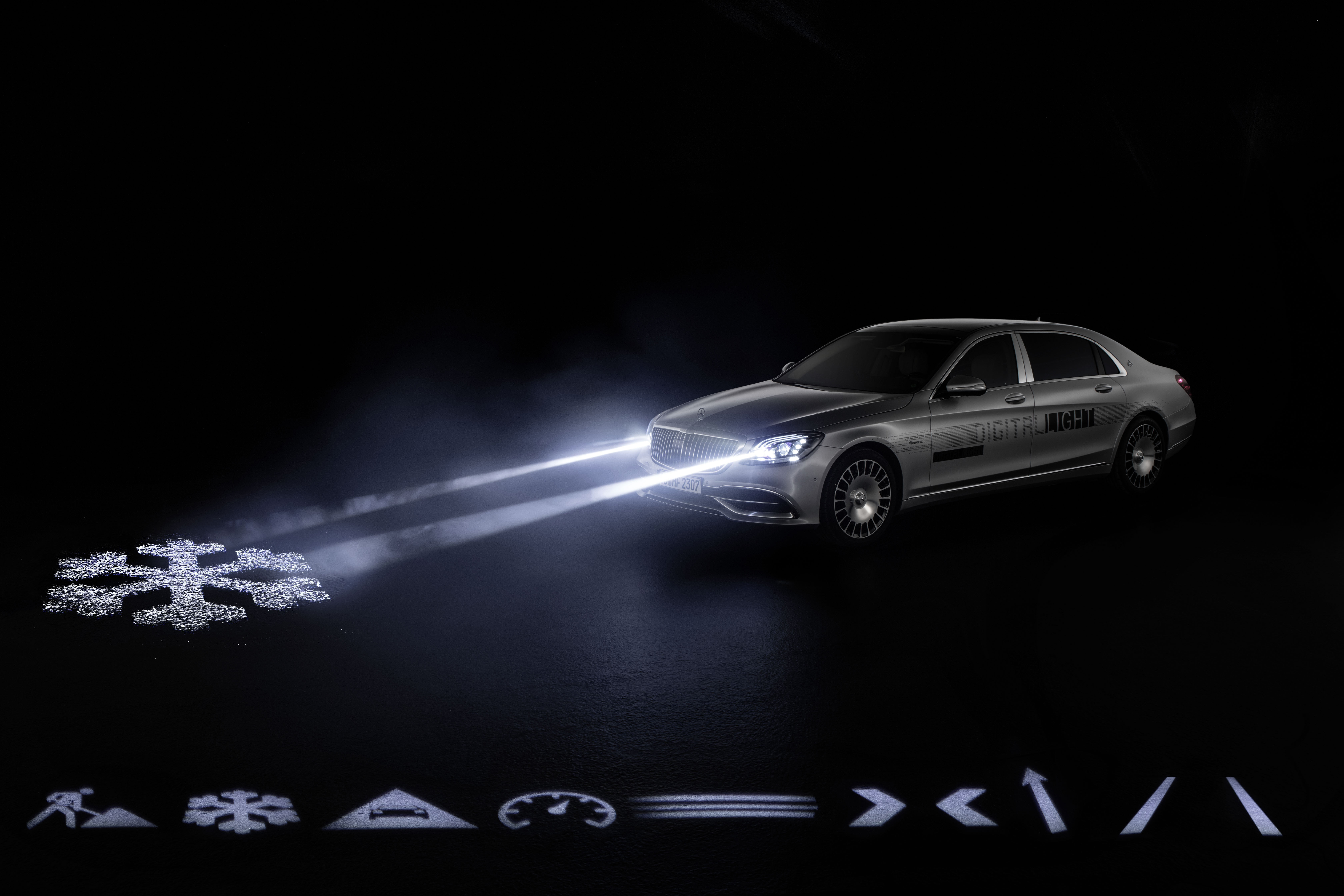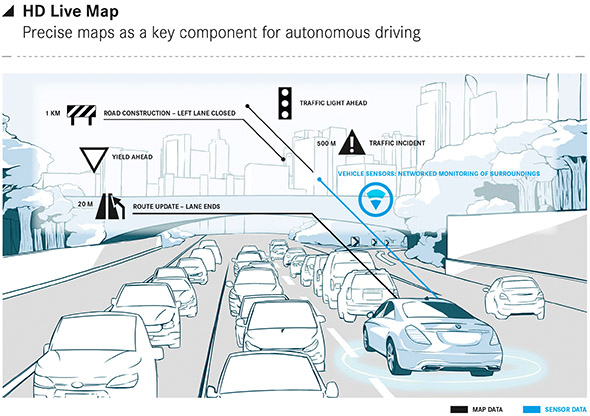LaneKeepingAssist

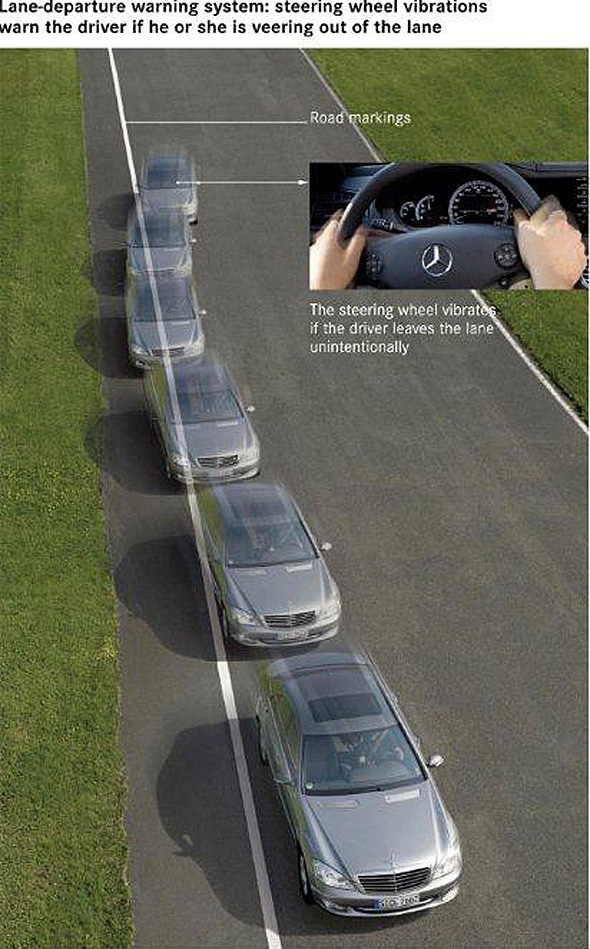
Steering wheel vibrates to warn the driver if the car leaves its lane unintentionally.
A newly developed Mercedes assistance system warns the driver if the car leaves its lane unintentionally. The camera on the inside of the windscreen monitors the road markings and detects when the car leaves its lane. Lane Keeping Assist will be available for the new E-Class and the S-Class from spring 2009.
Lane departure is the cause of one in six serious accidents on German roads. And more than a third of all road users killed here are involved in this type of accident. This is why Mercedes-Benz has developed this new technology – another “forward-looking” assistance system for even safer motoring.
This is made possible by a camera on the inside of the windscreen, which can detect road markings by evaluating the difference in contrast between the road surface and the markings.
The image-processing system sends data to an electronic control unit, which determines the position of the car and detects when it leaves its lane on the left or right. Unlike conventional systems of this type, the Mercedes assistance system also assesses the driver’s actions and, by doing so, reliably ascertains whether the car has left its lane intentionally or unintentionally.
There is therefore no warning if, for example, the driver accelerates before overtaking or joining a motorway, brakes heavily or steers into a bend.
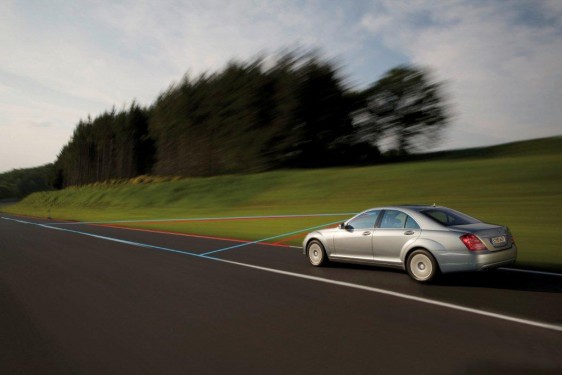
If the system determines that the car is leaving its lane unintentionally, it activates an electric motor, causing the steering wheel to vibrate – a discreet yet highly effective way of prompting the driver to countersteer. The timing of the warning depends on the width of the road and the type of lane markings. If the car crosses over a continuous line on the road, as opposed to a broken one, the system emits its warning earlier.
Lane Keeping Assist operates at speeds of between 60 and 250 km/h as soon as the system has detected a lane marking. The steering wheel does not vibrate to warn the driver if the driver cuts a corner intentionally, uses the turn indicators, moves back into the original lane after overtaking.
Furthermore, Lane Keeping Assist is deactivated immediately if ABS, ESP ®, Brake Assist or another safety system intervenes.
Around one in six serious road accidents in Germany is caused by a vehicle leaving its lane. This is why Lane Keeping Assist was developed. The system detects the lane markings in front of the vehicle by evaluating the difference in contrast between the road surface and the lane markings.
The line taken by the car and the driver’s activities are monitored at the same time. Only very specific movements indicate that the vehicle has left the detected lane unintentionally. Unlike conventional systems of this kind, the Mercedes system can reliably ascertain whether the car is leaving its lane intentionally or not.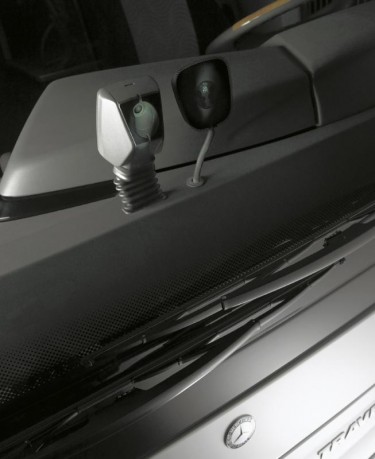
Only then does Lane Keeping Assist intervene: in cars by making the steering wheel vibrate to make the driver aware of the situation. There is therefore no warning if the driver e.g. accelerates before overtaking or joining a motorway, brakes heavily or enters a bend.
In trucks, the system works using audible warning signals which make the driver aware that the vehicle’s course needs to be corrected. As far as commercial vehicles are concerned, around half of all accidents caused by a vehicle changing lanes unintentionally can be prevented by using a Lane Departure Warning (LDW) system.
The Lane Assistant for buses shows just how intelligent and sophisticated Daimler’s safety systems are. Here, too, a camera in the windscreen monitors the vehicle to make sure it maintains the correct course in its lane.
The main point of concern for the bus developers was coming up with a suitable form of warning for the driver. An audible warning of the kind used in trucks was out of the question as this would inevitably unsettle the passengers. The solution: two vibration motors integrated in the driver’s seat cushion, which make the driver aware of the situation when the vehicle crosses the detected lane markings unintentionally, also indicating on which side of the lane this has occurred.
The system, which can be deactivated, is activated at speeds about 70 km/h, in other words on longer-distance routes. As soon as the driver indicates, the system is deactivated automatically.



